Tea set and tea-drinking are tightly connected. Many historical records and materials have proved that tea-drinking hasn’t appeared until the turn of Qin Dynasty and Han Dynasty. Chinese tea culture sprouted during the Wei and Jin Dynasties, during which the usages of tea existed in various ways, including food, medication, beverages, and so on. Among all, tea has been mostly taken as a kind of beverage. According to the "Guangling Xiaolao Zhuan", there has already elderly women who sold tea for a living on the markets in the Jin Dynasty. It was quite a competitive business with numerous pedlars as well as customers. From such phenomenon, it can be seen that drinking tea was highly prevalent at that time.
At the time under the governance of Emperor Xuan of the Han Dynasty, Wangbao has written "武阳买茶 (buy tea in Wuyang)" and "烹茶尽具 (cook tea and prepare clean tea sets)" in his book "Tong Yue (僮约)", this is the earliest record of tea drinking and buying in China.
In modern times, a celadon urn, carved with the character of "Cha (茶, tea)", with a height of 33.5 centimeters was found in a tomb in Huzhou, Zhejiang Province, which was built in the late East Han Dynasty. In recent years, a number of porcelains, such as bowls and cups, from the Eat Han Dynasty have been unearthed in Shangyu, Zhejiang Province.
The tea set was not fully separated from the dining set before Jin Dynasty. However, as tea has gradually transformed from food, and medication to beverage, some of the dining sets have been used as tea sets rather frequently, which has set the foundation for the transition from the drinking set to the tea set.
Han Dynasty
Tea has been increasingly commercialized during the Western Han Dynasty; as for the Eastern Han Dynasty, tea has been made into tea cakes for better transportation. Tea was mainly used for cooking ingredients and soup in this period. The prevalence of tea culture results in the upcoming of tea containers.
The teacup in this period was called “Shang (觞)”, an oval, shallow container with a flat bottom and half-moon shaped handles on both sides, which was also known as ear cup. There is a famous idiom about "Shang": Liu Shang Qu Shui (流觞曲水, winding stream party) from Lantingji Xu (兰亭集序, Preface to the Poems Collected from the Orchid Pavilion)
Mean that tea drinkers would sit by the river sides, and put the “Shang” with tea in it on the flow of the water. The teacup would go downstream and stop randomly at one of the drinkers, who, as was the rule, would drink the tea heartily, meaning to remove the infelicities.
Tang Dynasty
The tea culture became popular during Tang Dynasty. People have adopted the method of frying tea to drink it. They first crushed the tea cakes into powder, and boiled it with spring onions, gingers, and salt, which was very much like the soup.
Tea Ou (茶瓯) is one of the most typical Tang Dynasty tea sets. It can be mainly divided into two categories: jade-made and flowers-bottlenecked.
- The jade-made containers are straight on the bottleneck and curved on the bottom, as shallow as half a liter.
- The flower-bottlenecked containers usually have five flower-petal-shaped upper parts and five-melon-petal middle part. The bottom part of such containers is slightly outward. Among all the kilns that make Tea Ou, Yuezhou kiln is regarded as a high-end brand.
Song Dynasty
In the Song Dynasty, drinking tea has become a part of people’s life. From the royal family to the poor, everyone shared the love for tea. People considered it as a fashion, thus the drinking tea culture could been widely spread.
Dian Cha (点茶, whisking tea) was a popular method of making tea in the Song Dynasty. First crush the tea into powder and blend it into paste. Next, put the paste into the teacup and pour water into it while constantly stirring it with a tea brush until there appears white foam.
The black-glazed tea cup is not only easier for observing the density of the white foam, but also easier for observing the color of the tea. Therefore, people from all social classes have shared the love for it. The invention of the black-glazed tea cup was in accord with the time. One-third of the total kiln production in the Song Dynasty was taken up by black-glazed ones.
Yuan Dynasty
Technically speaking, the era of brewing tea only began after the Mongol nationality has inhabited central China. This nation of people was called “people on the horse”, and known for their hospitality, boldness, and casual personality. Thus they weren’t keen on inheriting the fussy whisking tea method of the Song Dynasty. For drinking tea, they preferred the easy and simple way, preserving the essential core of making tea, by putting dried tea into boiled water and let it brew. In this way, it could be quicklier to relieve one’s thirst and add a sense of savoriness to the plain hot water.
High-footed cup, though with early appearance, has only seen its popularity until the Yuan Dynasty. The Mongol nationality has realized the convenience of such cup with high stems when drinking on the horseback. This type of cup could be used on any occasion, from massive immigration to the feast for rewarding brave soldiers.
Ming Dynasty
The method of making tea has got rid of the luxury and furriness in the Ming Dynasty. It has become simpler and more natural as in the Yuan Dynasty. The habit of brewing and then drinking has been quite fashionable. The revolution of the method of drinking tea has not only boosted the process technology of tea at that time, but also made a series of tea containers that were “suitable for brewing tea” popular.
The Yongyue Ya Shou Bei (压手杯) of the Ming Dynasty has seen instant succes upon its first entrance. It has an amazing texture to hold with its slightly outward rim pressing right on thumb web and its body sticking to the palm. The open mouthed design of it allows people to easily observe the color, smell the scent of the tea. Its thickened middle part and heightened bottom part can delay the process of heat conduction in order to avoid burn people’s hand as well as avoid overfast cooling. The Hand-Pressing tea cup has not only been the favorite of the Yongle Emperor, but also an indispensable part of generations of tea drinkers.
Qing Dynasty
The habit of drinking tea in the Qing Dynasty has inherited from the Ming tradition. Simplicity and elegance have remained the main trend. Despite that, the color and lustre of tea set in this period were in varied colorful splendor. Apart from the traditional tricolor porcelains, pastel enamel and lots of new kinds were created in the Qing Dynasty. The beauty and variety of porcelains at that time were magnificant.
Comparing to other tea sets, the Gai Wan (盖碗) has won the majority of Qing people and become one of the features of the Qing tea set. Composed of lid, cup, and tray, the tureen is not only dust-proof, but also convenient with its outward rim and tray, which were designed for preventing burn of people’s fingers.
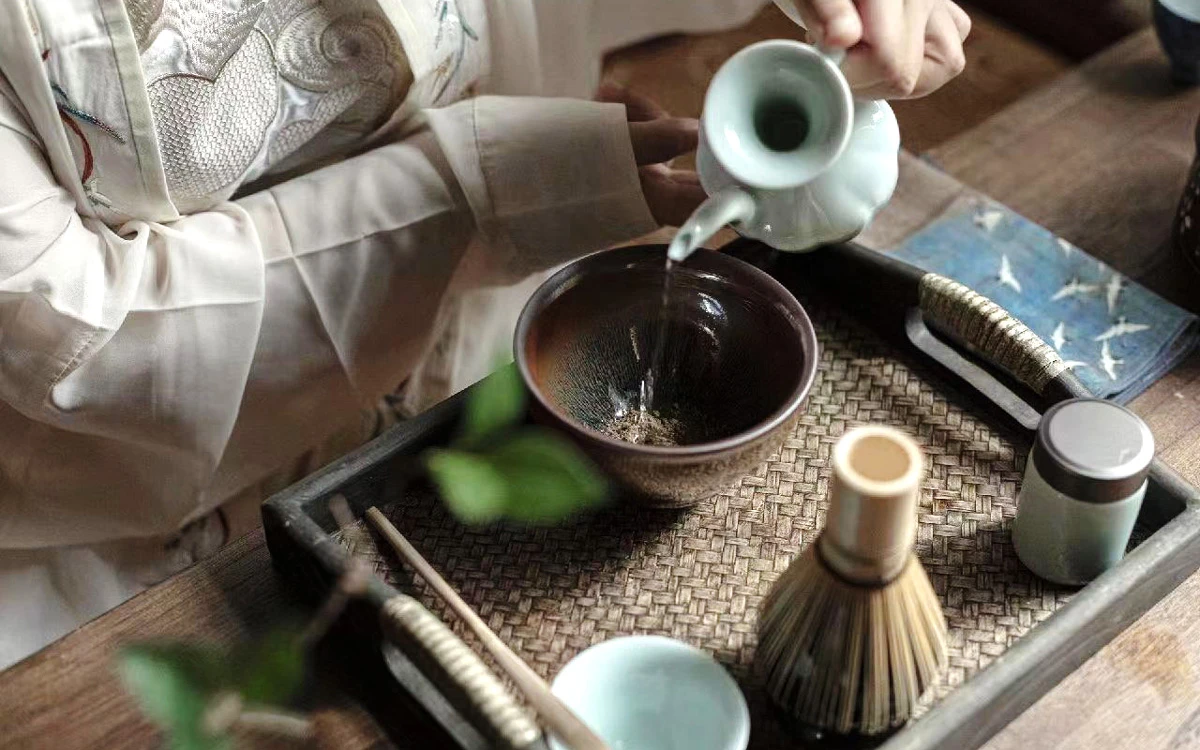
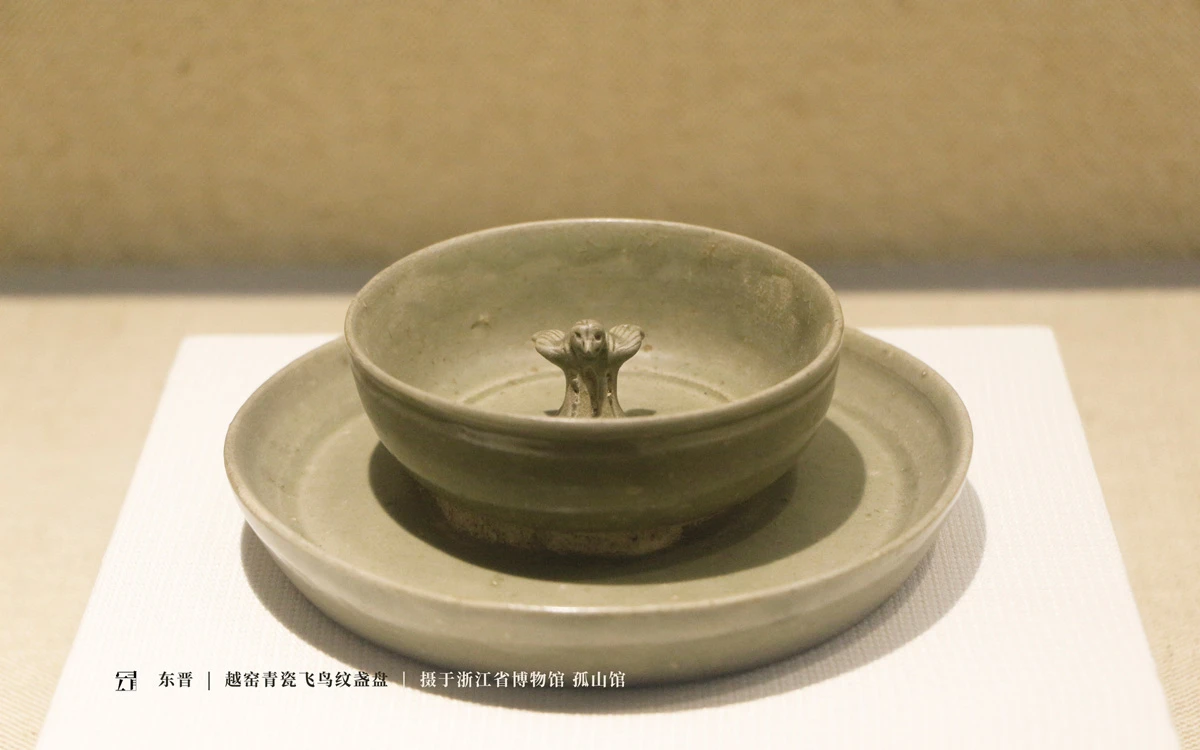
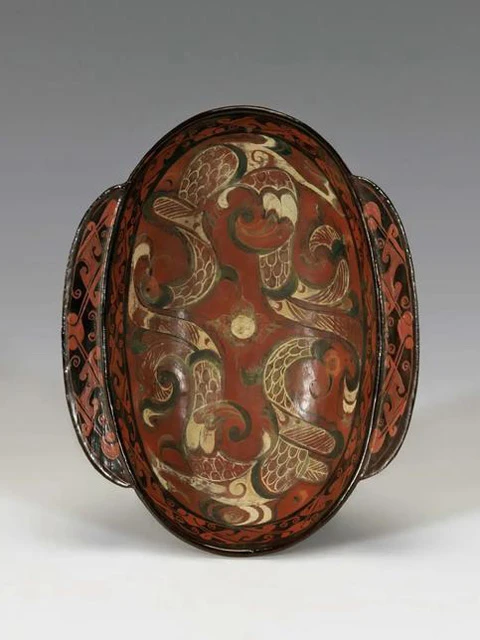
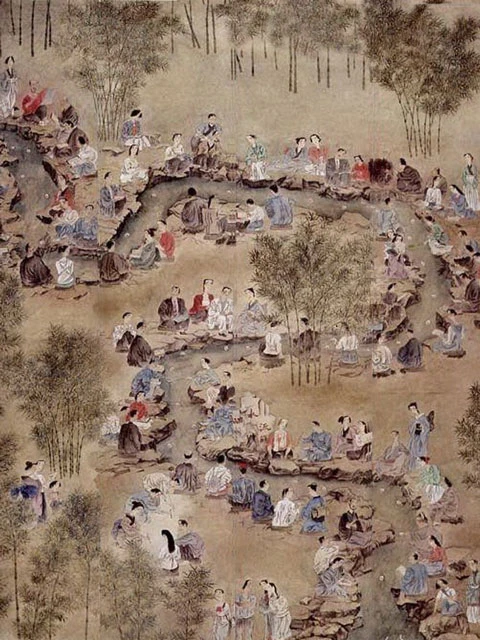
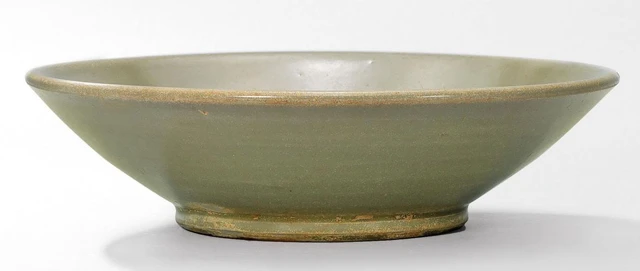
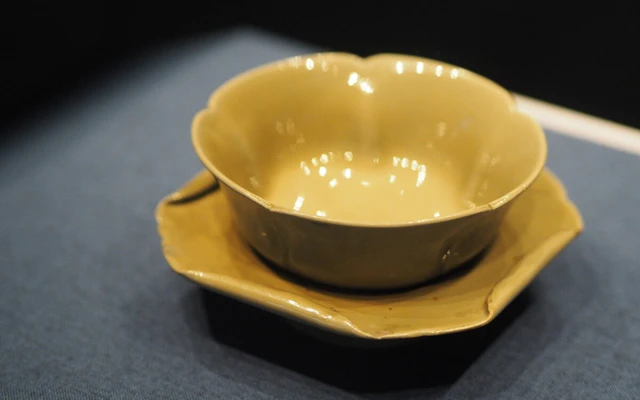
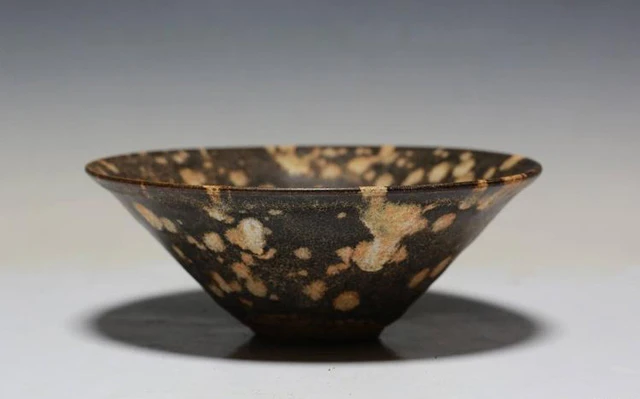
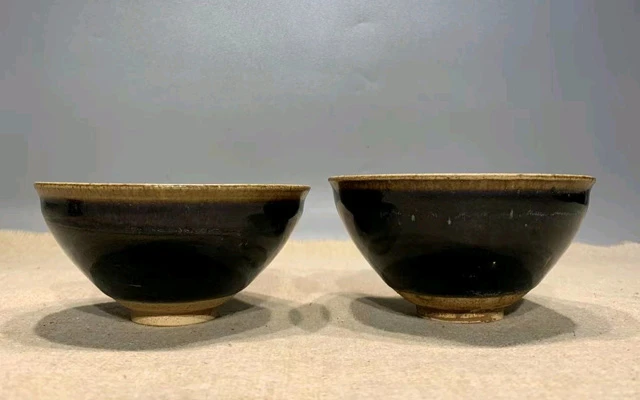
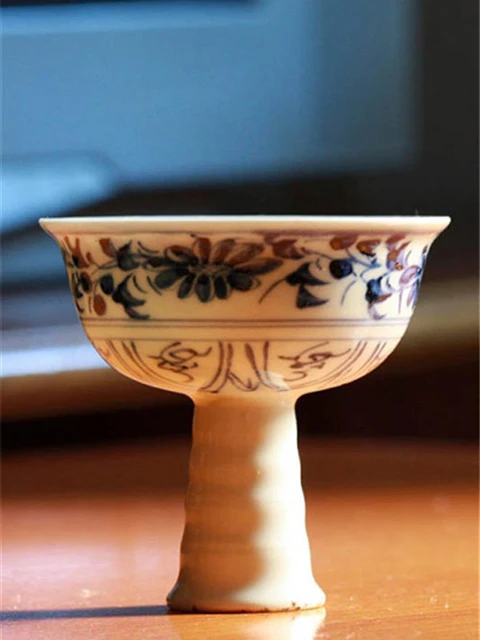
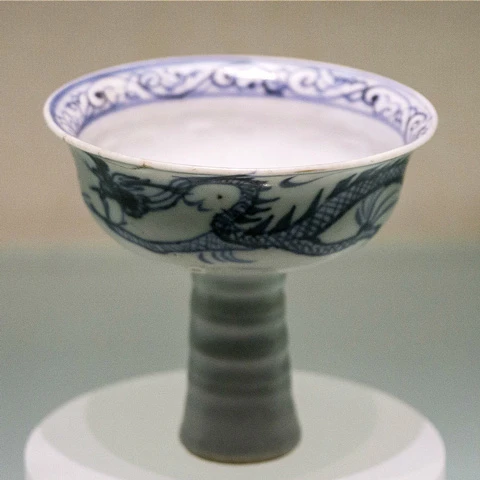
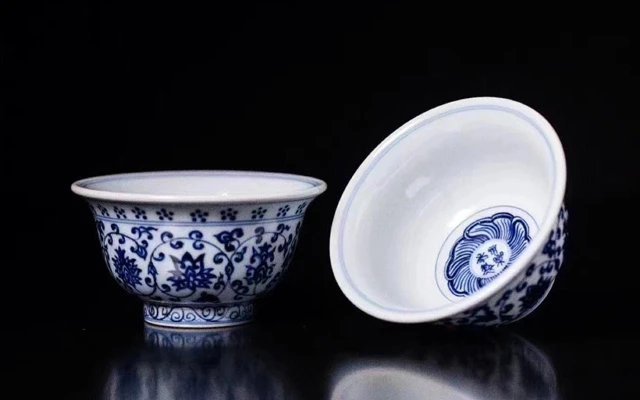
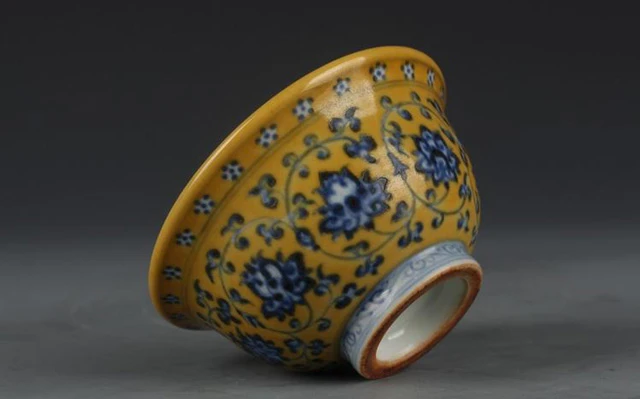
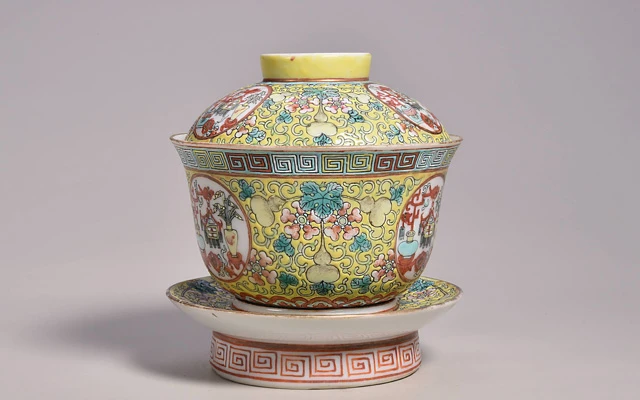
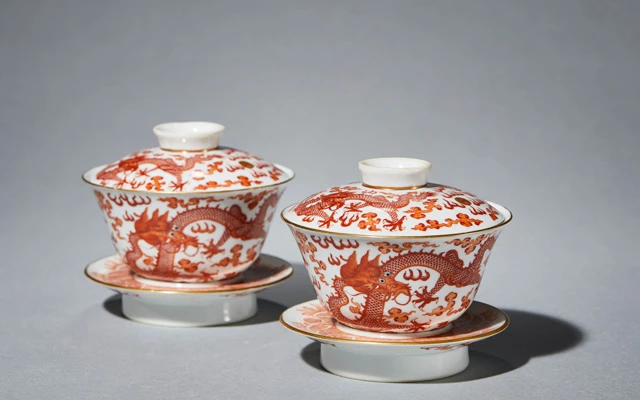

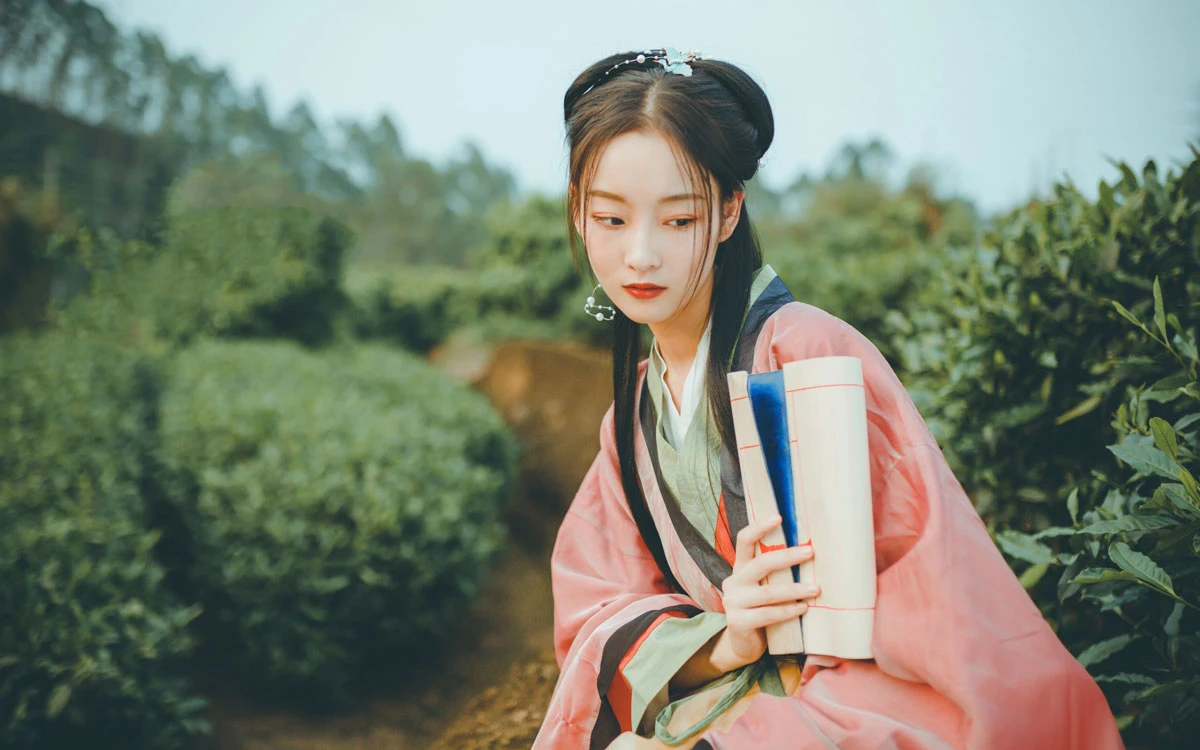

I enjoy drinking black tea with traditional Chinese tea sets while wearing Hanfu.